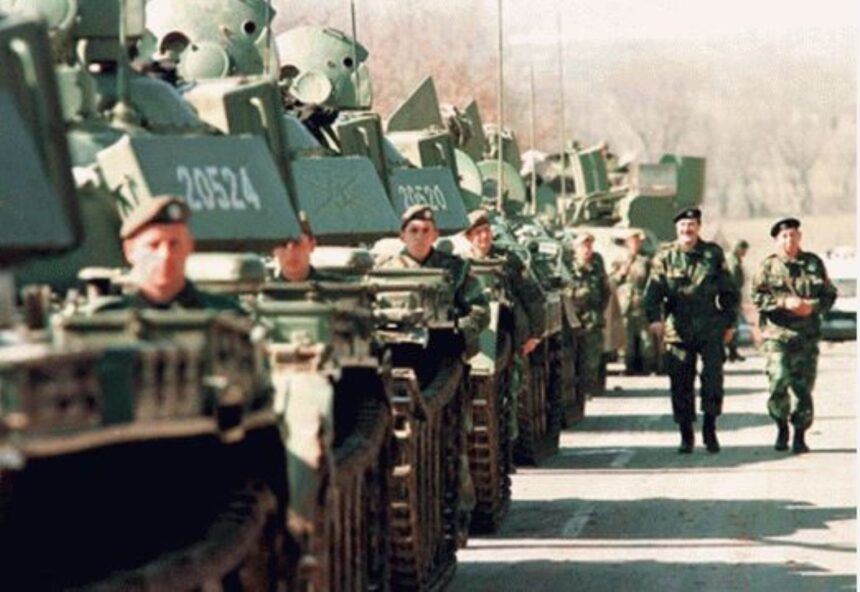Today marks 26 years since the signing of the Kumanovo Agreement, the pivotal accord that brought an end to Serbian violence in Kosovo. This agreement between NATO and the Federal Republic of Yugoslavia (FRY) was a prerequisite for halting NATO’s 78-day bombing campaign against strategic targets in the former Yugoslavia.
Under this agreement, Serbia was compelled to withdraw all its police and military forces from Kosovo. The Kumanovo Agreement was signed on June 9, 1999, and officially came into force on June 11, 1999.
It was signed by Michael Jackson, the first KFOR commander in Kosovo, and the then-Chief of Staff of the Serbian Army, General Nebojša Pavković. Pavković was later indicted by the International Criminal Tribunal in The Hague for war crimes and genocide.
Key Provisions of the Agreement
The agreement, which marked a new chapter following the era of Slobodan Milošević, stipulated the withdrawal of all Serbian military personnel and organizations from Kosovo. This included the regular army and navy forces, armed civilians, paramilitaries, air force, national guard, border police, reservists, military police, intelligence services, MUP (Ministry of Internal Affairs), local police, special police, anti-rebellion units, anti-terrorist units, and any other group so designated by KFOR.
It established a 25-kilometer air safety zone beyond Kosovo’s border and a 5-kilometer ground zone along the border with the FRY where no heavy armaments or military forces (except border guards) could be stationed.
The agreement was achieved after a 78-day NATO bombing campaign against Serbian targets and intense diplomatic efforts to end the war in Kosovo. During the conflict, over 15,000 people were killed or disappeared, and more than one million were displaced. Material destruction was also extensive.
NATO’s Arrival and the UN Mission
On June 12, 1999, the first NATO ground troops landed in Kosovo, while Serbian forces began their withdrawal. NATO Secretary General Javier Solana issued the order to cease bombing on June 10, 1999, and the UN Security Council adopted Resolution 1244. Under this resolution, 37,200 KFOR soldiers from 36 countries were deployed to Kosovo. The mission was divided into five zones of responsibility, assigned to American, British, French, German, and Italian KFOR contingents.
With NATO’s entry, the United Nations Interim Administration Mission in Kosovo (UNMIK) was also established to administer the territory for a determined period. Concurrently, the Kosovo Liberation Army (KLA) was disbanded and transformed into the Kosovo Protection Corps (KPC).







